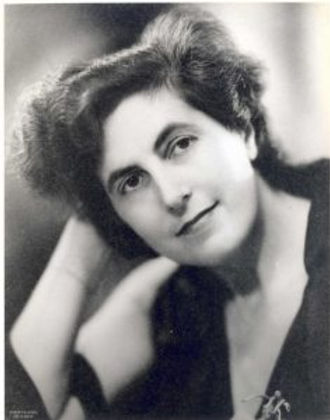
During the History of Music, female composers have been relegated into a secondary position within the society.
Even taking into account their high musical education, most of the times was their activity linked to another male artist. Very often have they worked specifically for the big names, doing important tasks within the carreer of a father, a brother or a husband, while those male artists were taking all the public merits.
These women were always behind the curtains, and in many cases, once they were married, their fabulous musical skills were even more underrated or simply dissapeared.
Eudora Quartet wants to put the work of some of those women where they deserve to be: in the music halls. The public of our generation needs to listen to these precious pieces of art, in order not to repeat anymore the unequal treatment of the female gender within the arts.
GENIUS WAS A WOMAN
Our travel starts in Germany, at the beginning of the XIX Century. Fanny Mendelssohn (1805 - 1847) or Fanny Hendel (which was her name after getting married) was raised in a musical family. Fanny and her brother Felix were educated as pianists and composers in Berlin.
Her father said in 1820: "Music will perhaps become his [i.e. Felix's] profession, while for you it can and must be only an ornament". He was very cautious about the idea of publishing her works under her actual name, and thought that it would be a distraction of her main duties of being a "good woman".
This was not the case of Felix, who became one of the most important composers of the History of Music. He took always carefully the advice of Fanny into consideration for his pieces, but she never got the opportunity to shine, basically because she was a woman.
Even in this scenario of clear discrimination, Fanny composed over 460 pieces, mainly for piano or songs. Her incursion into the string quartet was in 1835, and althought she explained in a letter to Felix that the language of the string instruments was still unknown for her, the result is an incredible piece of art, full of humble and rich colours and harmonies.


"I'm also here". In a period controlled by men, a female artist from Turkey wanted to make her work visible and recognized. Although we don't have nowadays much information about the life of Kevser Hanim, some of her pieces survived. One of them, Nihavend Longa, became one of the most famous melodies in the Ottoman Empire. However, the publishers of this piece never named her as the composer. It was not until the end of the first half of the 20th Century that her Nihavend Longa was finally recognized as hers.
Kevser Hanim was born in 1880 in Istambul, and mastered piano and violin playing, becoming violin teacher of both Turkish and Western Music in the first Conservatory of the Ottoman Empire, Dârülelhan Music School, in Istambul.
We continue our travel around the music written by women with the violist and composer Rebecca Clarke (1886 - 1979). With both British and American nationality, Clarke was one of the most important representations of the 20th Century American music, mastering styles such as Impresionism, Neo-Clasicism and Post-Romanticism.
In 1919 her famous Viola Sonata won a first prize in a competition sponsord by the pianist and chamber music patron Elizabeth Sprague Coolidge. Still at that time, was unconcievable that a woman could write such an amazing piece, and it was speculated that her feminin name "Rebecca Clarke" was only a pseudonym of Ernest Bloch, the famous composer. But more amazing chamber music pieces followed, making clear that it was only the beginning of a brilliant career as composer.
She wrote around a hundred pieces along her life, but only twenty pieces were published during her lifetime. The Rebecca Clarke Society is since 2000 working for the recognition and discovery of her work.


Our next stop in this trip is The Netherlands. Henriëtte Bosmans (1895 - 1952) was a Dutch composer and pianist. Born in a family of musicians (her parents were pianist and cellist), she became a very celebrated pianist in the 1920's, performing all around Europe and very specially with the Concertgebouw Orchestra.
Her career as composer was linked to her teachers Cornelis Dopper, Willem Pijper or her good friend Benjamin Britten. Her modern composition style, somehow close to Debussy at the beginning, makes a step forward in the use of politonality and continuous changes of bars measures.
Thanks to the Henriëtte Bosmans Prize, young Dutch composers have since 1994 the chance to be awarded by the Society of Dutch Composers. This prize means a very important recognition for the young generations of musicians in The Netherlands.
Fortunately, we have nowadays outstanding examples of female composers whose work is being fairly recognized.
Although the number of women and men within the composers' world is very far from the equality, we can talk about figures like Raquel García-Tomás (1984, Barcelona, composer and video artist), whose music has been awarded with prices like the Spanish National Award of Music 2020, "for the interdisciplinary and innovative character of her personal musical language".
Beside her orchestra compositions and chamber music, she is very active in the operatic creation, being recently nominated by The International Opera Awards for her opera Je Suis Narcissiste for Best World Premiere.
García-Tomás is Doctorate at the Royal College of Music, and her pieces have been performed in the most important theaters and concert halls in Madrid, Barcelona, Zaragoza, London, Berlin, Dresden, Karlsruhe, Stuttgart, Amsterdam, Luxemburg, Budapest, Vienna, Orléans, Lyon, Basel, Lausanne, Oporto, Edinburgh, Nagoya, Cairo, Buenos Aires or Rosario.
